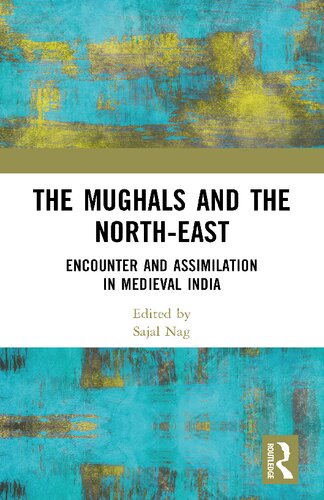

Most ebook files are in PDF format, so you can easily read them using various software such as Foxit Reader or directly on the Google Chrome browser.
Some ebook files are released by publishers in other formats such as .awz, .mobi, .epub, .fb2, etc. You may need to install specific software to read these formats on mobile/PC, such as Calibre.
Please read the tutorial at this link: https://ebookbell.com/faq
We offer FREE conversion to the popular formats you request; however, this may take some time. Therefore, right after payment, please email us, and we will try to provide the service as quickly as possible.
For some exceptional file formats or broken links (if any), please refrain from opening any disputes. Instead, email us first, and we will try to assist within a maximum of 6 hours.
EbookBell Team

4.7
26 reviewsThere is a perception that the region of north-east India maintained its ‘splendid isolation’ and remained outside the reach of the Mughals and did not have a pre-colonial past. The present book is an attempt to decenter and demolish the said perceptions and asserts that north-east India had a ‘medieval’ past through linkage with the dominant central power in India – the Mughals. The eastern frontier of this Mughal Empire was constituted by a number of states like Bengal, Koch Bihar, Assam, Manipur, Dimasa, Jaintia, Cachar, Tripura, Khasi confederation, Chittagong, Lushai and the Nagas. Of these, some areas like Bengal were an integral part of the Mughal Empire, while others like Koch Bihar and Assam were in and out of the empire. Tripura, Manipur, Jaintia and Cachar were frequently overrun by the Mughals whenever the State was short of revenue and withdrew soon without incorporating them in the state.
Despite not being a formal part of the Mughal Empire, the society, economy, polity and culture of the north-east India, however, had been majorly impacted by the Mughal presence. The brief, but effective advent of the Mughals had supplanted certain political and revenue institutions in various states. It generated trade and commerce, which linked it to the rest of India. A number of wondering Sufi saints, Islamic missionaries, imprisoned Mughal soldiers and officers were settled in various states, which resulted in a substantial Muslim population growth in the region. Besides the population, there are numerous Islamic and syncretic institutions, cultures, and shrines which dot the entire region.